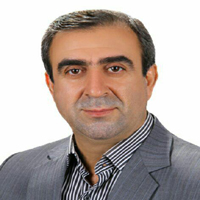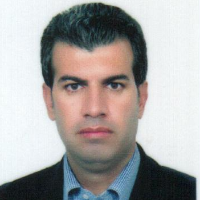“(The king) Arrived to the Ditch from Kabul”A Note on Compound of Kabul/Zirang and China/Chinestan According to Kush-nama
Myths and stories are important types of popular literature, and popular literature is one of the main forms of expression of popular culture. These public products have a large share in the cultural heritage of any nation. The deep layers of these stories are a reflection of the culture, thought and imagination of the people. These stories are among the oldest examples of the emergence of human thought and imagination, and among the various branches of popular culture and literature, they are considered to be the oldest human cultural heritage, and “If myths and stories "It should not be the oldest work and the oldest leak of the human mental system, but it is one of the oldest works left from human thought and imagination" (Mahjoub, 2008, vol. 1, p. 121). Myths, epics, myths, and folk tales originate from the collective unconscious of man and are inextricably linked. The dragon is also one of the common elements of myths, epics and folk tales. This mythical-epic creature has passed from the world of myth and epic and, by preserving most of its functions and actions, has entered the realms of folk tales. "Iranian Tales" with two hundred and eleven narrations in four volumes, is the first example of scientific collection of folk tales that has been provided in two decades by Anjavi Shirazi and a large collection of cultural researchers and all researchers confirm the authenticity of these stories. (cf. Marzelf, 1994, p. 106). Therefore, the four-volume collection of "Iranian Tales" of the statistical population of this study has been selected. In general, twenty-one dragons are shown in the statistical population. In ten stories from the four-volume collection of Iranian stories, a dragon appears, and in five stories, more than one dragon emerges. This article tries to answer the following questions: What are the characteristics of the dragon's appearance, food and habitat in folk tales, what actions did the dragon appear in the tales with, and what is his end in the tales.
The research method in this paper is library and documentary and based on notes from written and non-written sources. In this study, the four-volume collection of Iranian folk tales collected by Anjavi Shirazi with the letters of Iranian tales, the patient stone doll, the flower to the spruce, and the orange and bergamot girl are examined. The present study uses descriptive-analytical methods to examine the apparent characteristics, feed and habitat of dragons in folk tales and to examine the actions and functions of dragons in tales, and finally this creature in myths To dig.
Iranian myths and legends are a reflection of a long-standing tradition in Iranian culture and civilization that has been transformed by the transformation of the barrier to self-destruction and continues to be supported by millennia: “Iranian myths, stories and tales There are ancient beings that include supernatural and transcendental beings. These myths, which have survived from the legend of Iran, reflect the views of the society to which they originally belonged ”(Curtis, 1997, p. 3). The dragon is one of these supernatural beings. In the legends of lands such as India, China and Babylon, the dragon is a symbol of drought, darkness and destructive floods, and in Iran it is a symbol of moral vices and a manifestation of deadly and evil forces (cf. Koyaji, 1999, p. 77). The dragon "in epic narratives and folk tales, is a manifestation of calamity, drought and evil. By destroying him, the hero restores blessings and comfort to the people ”(Pakbaz, 2006, vol. 1, p. 965). This evil creature is a prominent element in folk tales and stories, and provides the basis for the emergence of good and evil. The dragon has special appearance in the stories and is manifested in the legends by the way it prepares food and its habitat. The dragon does not behave in the same way and appears with different actions. The dragon determines the end of his life and finally his stories with his actions. The dragon's appearance, food, and habitat are then examined, then the dragon's behavior, and finally the creature in the stories.
The dragon of fairy tales, in terms of its limbs, food and habitat, has the same characteristics as the mythical and epic dragon. Dragons and snakes are not separated from each other in some of the stories. The dragon is described in the stories as majestic, horned, eloquent, fiery, old, black, or green. The dragon has the power to kill humans and its prey with its powerful breath, and this is the feature that makes it a scary and invincible creature in the eyes of humans. Storytellers, like mythical and epic narratives, provide their food in the form of hunting or sacrifice. The dragon of fairy tales is always successful in hunting humans and wild animals or in sacrificing to the general public, but with the presence of the hero in eating Simorgh chickens or eating princes and princesses, it fails to draw the victim. In most cases, the habitat of this creature is either not identified or is associated with water. Wells, mountains, caves in the mountains, forests and deserts are other dragon places in fairy tales. Unlike the myths associated with the two elements of water and fire, the dragon of the tales maintains its connection with the water in the tales rather than the fire. Dragon actions are destructive and destructive in most stories, and therefore the evil dragon is killed. These actions include hunting, fighting the hero, blocking the water, capturing the victim, and enchanting. The battle of the dragon and the hero is rooted in the myth of the battle of good and evil. In these stories, the hero, like the epic narratives, represents Simorgh in the battle of good and evil. By circling the water, the dragon also shows the functions of taking the victim and fighting the hero, which is another manifestation of the battle between the forces of good and evil. The heroes of the stories, unlike the epic narratives that are likely to be defeated, are always victorious and dragonfly. Women and the general public have no role in fighting and killing dragons, and their dragon heroes must be the sons of the king (except for one example), and this thinking is rooted in the beliefs of the ancient Indian and Iranian gods. However, the destructive actions of the dragon make it an evil character, and evil is perishable in the minds of Iranians. Therefore, evil dragons are killed in stories, but sometimes the dragon does not show evil by having passive and constructive actions. Dragons with actions such as supporting and helping the hero or the action of his actions in the stories have caused us to no longer be able to call this creature a pure evil, and the dragon with such actions in the stories is not doomed to deat.
dragon , food , habitat , behavior , Iranian stories
- حق عضویت دریافتی صرف حمایت از نشریات عضو و نگهداری، تکمیل و توسعه مگیران میشود.
- پرداخت حق اشتراک و دانلود مقالات اجازه بازنشر آن در سایر رسانههای چاپی و دیجیتال را به کاربر نمیدهد.




